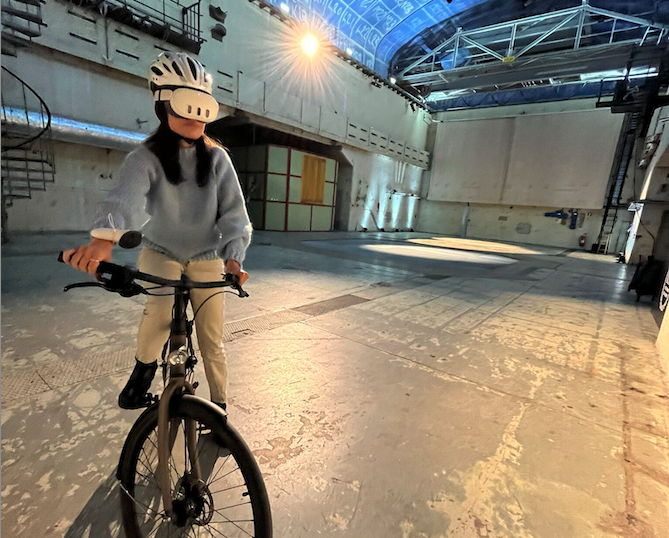Researchers in Glasgow have turned to augmented reality to help cyclists develop a ‘new language’ when communicating on the roads with self-driving cars.
University of Glasgow psychologists and technologists joined forces to come up with a range of scenarios using immersive headsets to help cyclists navigate anticipate the moves of autonomous vehicles.
The study, carried out with the KTH Royal Institute of Technology in Sweden, found that virtual technology could provide ‘focused awareness’ of vehicles that present the greatest risk for cyclists on the roads.
It also showed that cyclists in three different cities around the world – Muscat in Oman, Stockholm in Sweden and Glasgow – react differently when sharing roads with self-driving cars.
Therefore, manufacturers of autonomous vehicles should take into consideration local factors when designing on board communication tools with fellow road users, the study suggested.
Researchers from the University of Glasgow developed the tool, called CycleARcade, which uses augmented reality headsets to enables cyclists to see and interact with simulated autonomous vehicles as they ride in real-world environments.
The team used CycleARcade to explore how new gear could equip cyclists with a ‘sixth sense’ to help them be more aware of self-driving cars’ intentions. They also examined how cyclists from different countries may expect different behaviours from autonomous vehicles on their local roads.
Unlike traditional simulators which use stationary bikes surrounded by computer screens to mimic real-world situations, CycleARcade enables a more realistic experience, where cyclists ride freely in open spaces with graphics of virtual vehicles displayed in their headsets. The system provides researchers with precise control over the virtual vehicles, allowing cyclists to safely test out immersive scenarios which could be dangerous on real roads with actual cars.
With the help of a focus group of 20 cyclists, they developed and tested three virtual displays which would give riders information about vehicles around them in different road scenarios where some cars would yield to the cyclists while others would not.
One prototype, RoadAlert, displayed signals about the cars’ intentions directly onto the road surface and played spatial audio beeps which got louder as vehicles approached. A second, called reARview, gave riders a virtual rear-view mirror through augmented reality glasses. The third, named Gem, used handlebar-mounted displays to communicate the virtual vehicles’ movements.
Ammar Al-Taie, of the University of Glasgow’s School of Computing Science, is the paper’s lead author. He said: “Technology offers an opportunity to augment cyclists’ awareness of the roads around them, providing a kind of ‘sixth sense’ to help them navigate safely.
“What we found in this study is that you don’t need to alert cyclists about all vehicles equally. Cyclists need focused awareness of vehicles that pose the greatest risk, like those approaching from behind or vehicles that won’t yield, while being able to maintain attention on the road ahead. RoadAlert was the design that brought those qualities together most effectively for our study participants.
“It’s important to emphasise, though, that we’re not expecting cyclists to have to adopt this kind of technology in order to stay safe on the roads in the future. Instead, we’re expanding the toolbox for cyclists who want additional support or awareness, who could choose to buy devices specifically designed to do so.”
CycleARcade is the latest development in research led by Professor Stephen Brewster, of the University of Glasgow’s School of Computing Science, which focuses on how cyclists can communicate with self-driving cars in the years ahead.
Professor Brewster said: “Ultimately, we’re aiming to thoroughly explore the ways in which cyclists and autonomous vehicles can speak the same language on the roads to keep both as safe as possible. Human drivers and riders have developed a sophisticated series of signals to help decide who has the right of way or who has priority in a change of lanes, for example, and it’s vital that cyclists can have the same level of trust and understanding with self-driving cars.




